The Dogon people, residing on the sandy plateau of Bandiagara in central Mali (east of the Niger River), construct their villages against the Bandiagara cliff. Prior to the Dogon’s settlement, the Tellem inhabited the area, living there until the 15th century. The Dogon, renowned for their ancient traditions, are associated with carvings and bronzes, as well as exquisitely decorated domestic objects like doors, shutters, and granary ladders. This article focuses on Dogon ladders, which are familiar to Western museums and collectors of African art, delving into their design and practical applications.
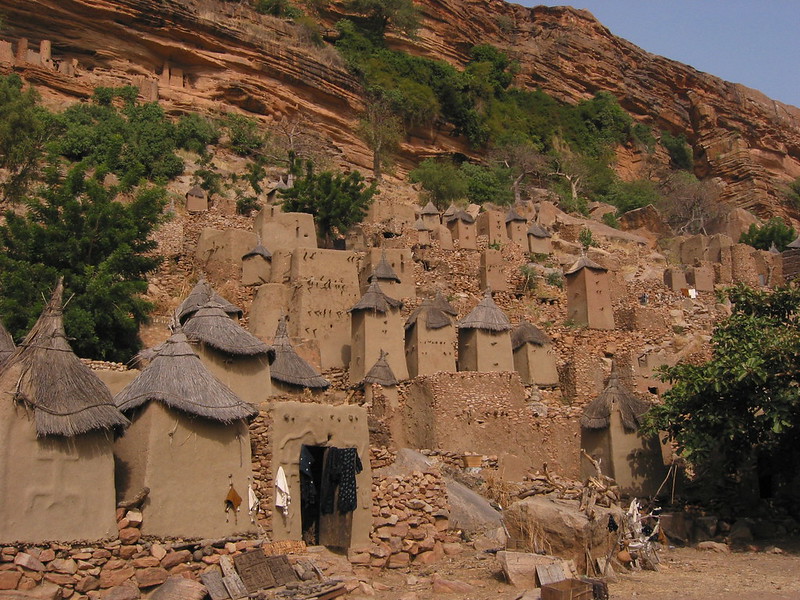
A Dogon village near the Bandiagara cliff prominently displays granaries identified by their pointy thatched roofs.
What do Dogon ladders look like?
Characteristic of Dogon ladders is their Y-shape, featuring intricately carved steps at the front. Occasionally, the Y-shape is flattened at the back to enhance stability. The ladders come in two variations—either plain and simple or adorned with intricate patterns and symbols. These decorations often depict mythological or cosmological narratives, with symbols representing animals, ancestors, or celestial bodies.
The Y-shaped design of the ladder holds significant meaning within the Dogon worldview. It symbolizes the connection between the three realms in the Dogon cosmology—the subterranean, terrestrial, and celestial worlds.
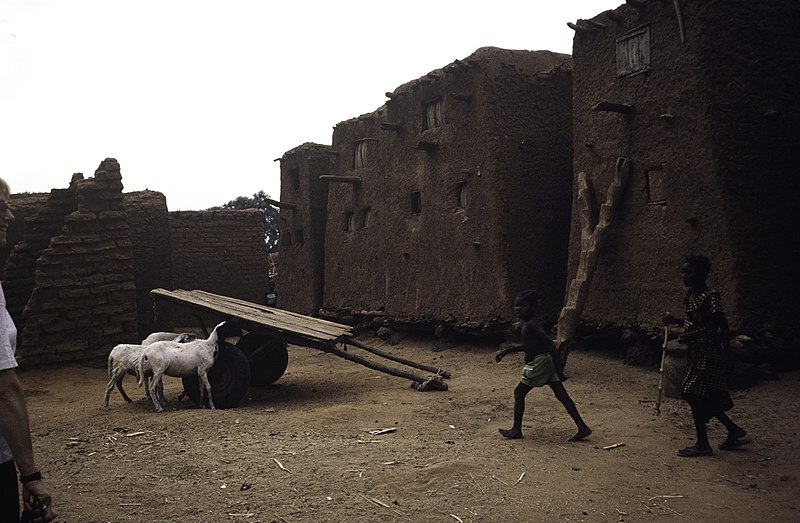
A woman with a boy stands near stock sheds featuring wooden shutters, a two-wheeled wagon, and three goats. A Y-shaped Dogon staircase leans against a mud wall. Bankass, Mali – November-December 1983. Photographer: Angeline A. van Achterberg.
How are Dogon ladders used?
The Dogon use ladders for ascending their houses and granaries, overcoming the varying heights of these structures. To safeguard their granary stocks from pests, the Dogon elevate them on poles. Notably, the ladder, serving as stairs in this context, is not affixed to the granary to prevent pests from gaining entry. Instead, a separate, easily movable, and robust ladder is used for the purpose of lifting heavy items in and out, crafted from materials readily available within the village. When not in use, the ladder is stored beneath the granary.
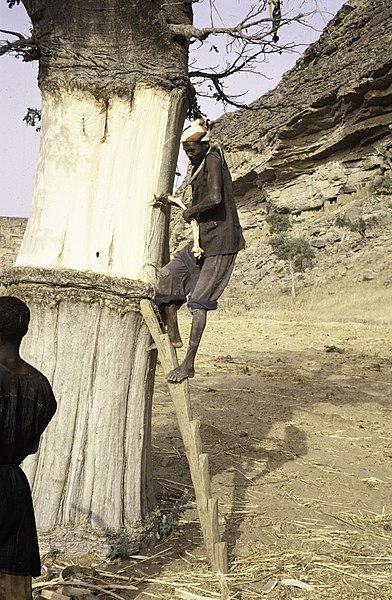
A man stands on a Dogon step against a baobab tree, pulling off the bark used for braiding. In the background is the Bandiagara Escarpment. Kani Kombole, Mali – November-December 1983. Photographer: Angeline A. van Achterberg.
The Dogon ladders of Rootz Gallery
In its collection, Rootz Gallery showcases some exquisite Dogon ladders. Let’s delve into the descriptions of two of these captivating pieces.
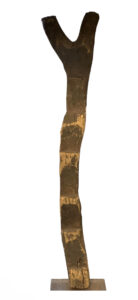
Ladder 1
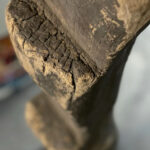
Close-up of Dogon ladder 1
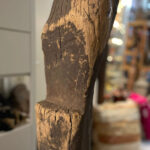
Close-up of Dogon ladder 1
Ladder 1 stands tall at 2 meters, featuring 6 steps and a slightly flattened back in its distinctive Y-shape. This ladder, priced at €549, boasts a clean and unadorned design without any decorative carvings.

Ladder 2 from the front (steps side)

Ladder 2 from the back (decorated side)
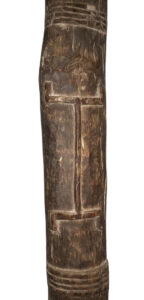
Dogon ladder 2 close-up of the decoration
Ladder 2, measuring 1.40 meters, presents 4 steps without a flattened fork. It showcases decorative carvings reminiscent of the symbolism of the Kanaga mask. This artful piece is available for €179.
Other examples of Dogon art in the Rootz Gallery collection
- Dogon masks
The Dogon are renowned for their vibrant masks used in mourning ceremonies, known as the ritual of dama.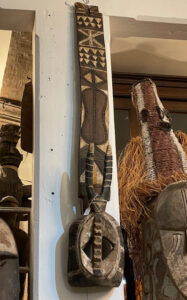
Dogon mask
- Granary doors
The hardwood granary doors, adorned with exquisite carvings, often feature human figures, particularly ancestor figures. Intriguingly, some doors depict animals, such as crocodiles, or showcase geometric patterns. Symbolism from the Kanaga mask, a distinctive element of Dogon art, is frequently incorporated into these doors.
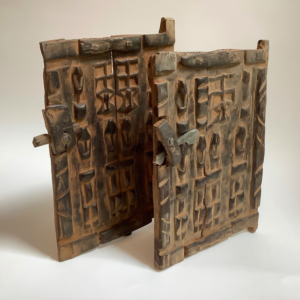
Dogon granary doors
- Bronze Dogon rider on horseback
Bronze figurines of Dogon riders on horseback, crafted using the lost wax method, symbolize wealth and power in a society where horses hold significant value due to their rarity.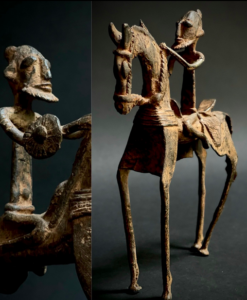
Dogon horseback rider
- Medicine cabinets
The medicine cabinets serve as storage for a medicine man or shaman’s herbs. These cabinets, featuring one, two, or three small doors, commonly bear carvings of ancestor figures or, at times, animals like lizards or Kanaga masks. The top of the cabinet often displays one or two heads with faces on either side or more elaborate carvings, such as a rider on a horse.
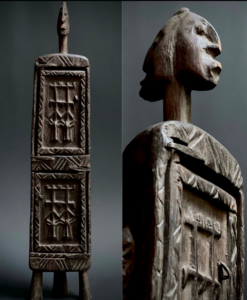
Dogon medicine cabinet
We sell these items in our gallery in Deventer and through our listings on Catawiki.
